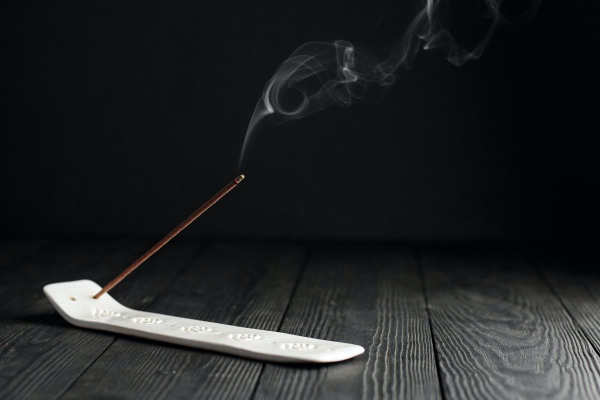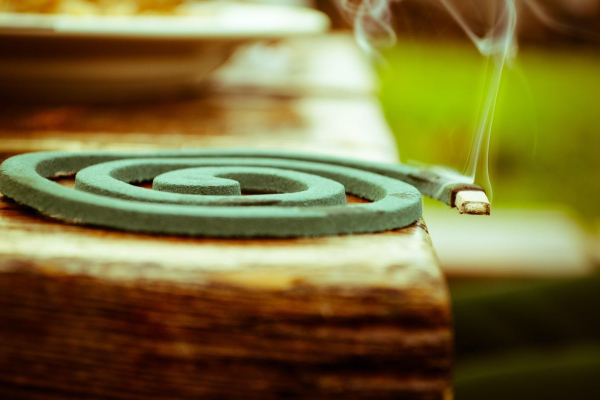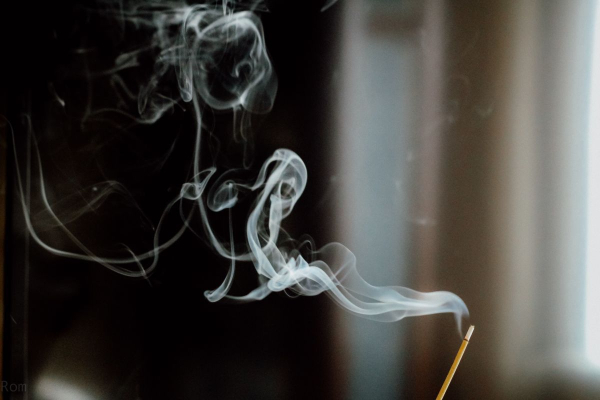Looking to learn more about Japanese incense?
As in, what types of incenses there are? How to burn Japanese incense? And why is incense used in Japan? You’ll learn all about it in this guide. This guide covers…
- Introduction to Japanese Incense
- How to burn incense properly
- Types of Incense
- Agarwood
- Sandalwood
- and others
I’ll also recommend some incense products and incense holders… if you’re interested. So, let’s jump in. Keep on reading.
1. Intro to Japanese incense (香)
Incense has been an important part of Japanese cultural history for over a thousand years. In fact the word for incense, ko (香) is the same word for the word “to smell”. It was originally introduced from China in the 6th century as a part of Buddhist customs. They were used during Buddhist rituals and meditation.
Today, many Japanese people still follow Buddhist practices and use incense as part of daily life. It’s common for Japanese households to have a small shrine in their homes for the dead. At these shrines, it is believed that you can communicate with ancestors by offering incense and ringing a bell.
Most Japanese incense features a stick-like design made from agarwood, sandalwood, tree bark powder, and other aromatics. These ingredients are formed into a paste that is turned into sticks and dried. Each incense can usually last around 25 minutes. In Japan, incense is usually burned with the incense stick upright. When it is angled, it can also burn slower.
By the way, if you want some for yourself… take a look on Amazon below.
What’s different about Japanese incense compared to other countries?
- Japanese incense scent is more subtle and less smoky than others.
- Indian incense uses a bamboo center which makes it burn intensely and smell much stronger.
- Chinese incense can be similar to Japanese incense but can have a longer length.
2. How to burn Japanese incense

In order to burn Japanese incense you need some kind of incense holder.
What kind of holders are there? Well, holders can either be a bowl or a special stand for the incense. If you have a bowl, you’ll also need white ash that can hold the incense upright. If you’re looking for holders, you can find them on Amazon.
Once you have everything you need — a holder and the incense, you can take an incense and light it at the tip. Wave the incense quickly to put out the flame. It is considered bad practice to blow it out like a candle. You can set it upright in an incense container and enjoy!
Although there are many ways to enjoy incense, it is particularly useful for relaxing and meditating. Some incense is specially designed to last a certain length of time to accompany meditation.
3. Types of Incense
Japanese incense tend to fall under 2 main types:
- agarwood
- sandalwood
Agarwood is a type of wood that can only be formed when a special mold grows on it that helps develop a fragrant resin.
Sandalwood is a wood that needs to grow a minimum of 15 years for it to be used for incense.
Both sandalwood and agarwood are becoming harder to find as the natural resources are getting depleted.
Along with different kinds of agarwood, it’s also possible to find other aromatics that are added to the incense. This can include cinnamon, cloves, patchouli, and benzoin.
3.1 Types of Agarwood incense:
With traditional Japanese incense, the type of incense can be categorized based on where the agarwood comes from.
1) Kyara
Kyra incense is one of the most expensive and valuable incenses. They are made with agarwood that comes from Vietnam. It can be worth more than its weight in gold. The aromas from this incense are spicy and slightly bitter.
2) Manaka
A special agarwood found in Malaysia makes the manaka incense. The scent of this incense is light and changes quickly so that you can enjoy the different scents as it burns.
3) Rakoku
This incense can be sharp and deep. The agarwood for rakoku comes from Thailand.
4) Sumotara
Sumotara agarwood comes from Sumatra, Indonesia. This incense has an earthy scent that is also a little bit sour.
5) Manaban
This is a unique incense because the origin of the agarwood is not known. Its scent is strong and salty.
6) Sasora
The agarwood for sasora originates from India. This scent is characterized by the way that it immediately disappears. It is meant to be enjoyed in the moment.
3.2 Other forms of Japanese incense:
Japanese incense can also be found in various shapes like in kneaded balls, granulated, or coiled. There can also be different options for pure or low smoke incense.
7) Kneaded incense:
This is a type of incense which is not in stick form. Instead, the incense powders are kneaded together to form balls which are heated with charcoal. Kneaded incense is used most often in Japanese tea ceremonies.
8) Granulated incense:
With this type of incense, the incense is in the form of granules. It is used by sprinkling on top of burning charcoal.
9) Horin Coiled incense:
This is a coil shaped incense that lasts a long time. Due to its shape, it can last over 2 hours once it starts burning.

10) Low smoke incense:
For those who are sensitive to smoke, this is a great type of incense. Compared to normal Japanese incense, there is less smoke. You can enjoy the scent without the heavy smokiness that might come with it.
11) Pure incense:
This is a type of incense that only uses a single scent. It is a very pure experience where you can focus and appreciate one scent.
4. Conclusion
Now, you know a bit about Japanese incense…
How it’s used in Japan and the cultural significance…
How to burn it…
And the types.
Now, back to you. Do you burn incense? Which incense do you prefer? Leave a comment?
– Team I J
